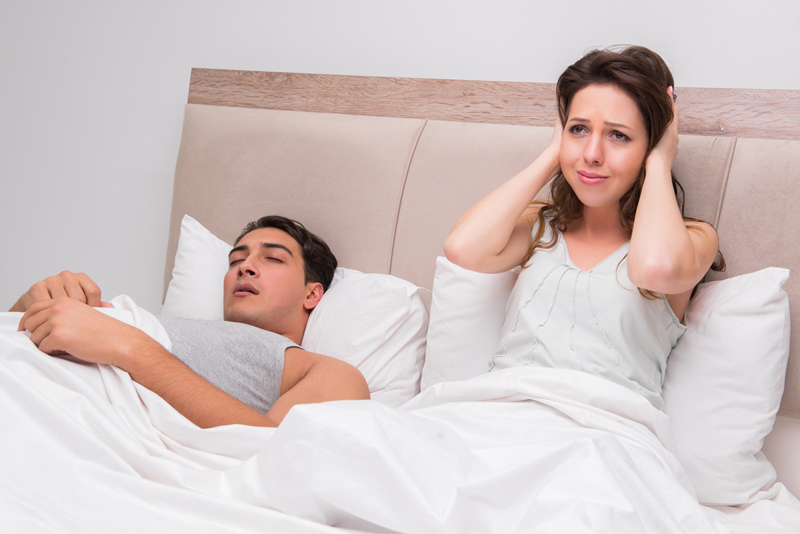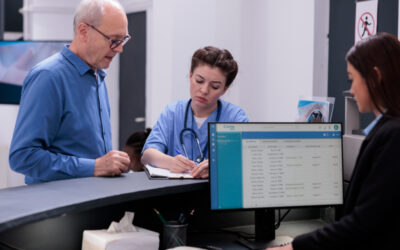Obstructive sleep apnea (OSA) is a condition now commonly addressed by dentists. This breathing disorder can be defined as either a decrease or complete cessation of airflow during sleep. According to SleepFoundation.org, more than 18 million American adults have sleep apnea. Apart from continuous positive airway pressure device (CPAP), other methods of treating sleep apnea include dental appliances which reposition the lower jaw and tongue; and upper airway surgery to remove tissue in the airway among others. Dental sleep medicine specialty focuses on the management of sleep-related breathing disorders, including snoring and obstructive sleep apnea, through the use of oral appliance therapy. Dental practices provide oral appliance therapy (OAT) in partnership with physicians and they can rely on experienced medical billing companies to support their claim submission tasks.
Dentistry and sleep-related breathing disorders (SRBD)
Sleep-related breathing disorders (SRBD) are characterized by disruptions in normal breathing patterns. SRBDs are potentially serious medical conditions caused by anatomical airway collapse and altered respiratory control mechanisms. Common SRBDs include snoring, upper airway resistance syndrome (UARS) and obstructive sleep apnea (OSA).
In 2017, ADA proposed a new policy that dentists have a key role in treating sleep-related breathing disorders (SRBD). In this ADA policy, key roles of a dentist include assessing a patient’s risk for SRBD as part of a comprehensive medical and dental history and referring affected patients to appropriate physicians, evaluating the appropriateness of oral appliance therapy (OAT) as prescribed by a physician. They will then provide OAT for mild and moderate sleep apnea when a patient does not tolerate a continuous positive airway pressure (CPAP) device, recognizing and managing OAT side effects, continually updating dental sleep medicine knowledge and training; and communicating patients’ treatment progress with the referring physician and other healthcare providers.
Oral appliance therapy for OSA and its coverage
Oral appliance therapy (OAT) involves fitting a custom-made oral appliance worn at night to reposition the lower jaw and tongue forward to improve upper airway patency during sleep. OAT for the treatment of obstructive sleep apnea is covered by Part B of the Medicare program under the DMEPOS benefit category. For purposes of Medicare coverage, this therapy is categorized as durable medical equipment (DME).
Oral appliance therapy requires that the physician and dentist function as an integrated team to optimize therapeutic response and patient compliance. As sleep-related breathing disorders are medical conditions, for obstructive sleep apnea, the diagnosis will be made by the physician and, if prescribed, oral appliance therapy is provided by dentists trained in dental sleep medicine.
Also, as OSA is a medical condition, the dental office must submit claims for oral appliance therapy to medical insurers and not dental. Since Medicare approved oral appliances in 2011, most medical plans generally offer coverage for FDA-approved appliances.
However, prior authorization or pre-determination is crucial for dental practices to confirm the patient’s insurance coverage before providing service. Pre-authorization also allows the insurers to review medical necessity for the device in advance to determine if the patient’s condition and the proposed device meet the insurer’s criteria for reimbursement. For pre-determination, the dental professional will have to submit a claim form with the code that will be used for the oral appliance. The claim should be marked clearly at the top with the term “pre-determination request.” Documentation to be submitted along with the pre-determination claim are the prescription for the oral appliance from the referring physician, letter of medical necessity from the physician, diagnosis code(s), CPAP intolerance affidavit (if warranted), treatment code(s), and documentation of the patient’s visit and references.
For the insurance plan to include coverage for oral appliance therapy, the insurance company would need to contract with dental professionals, generally as durable medical equipment (DME) providers, to provide the service at a discounted rate. While DME providers can only bill for the oral appliance, to bill for office visits you must also be a Medicare Part B provider. By becoming an in-network provider in a managed care plan, dentists can ease claim filing and increase patient volume. Most patients prefer in-network providers, as the services provided by them are more likely to be covered under the insurance plan than out-of-network providers.
Medicare only covers durable medical equipment provided by suppliers enrolled in the Medicare Program and who have a Medicare supplier number. There are no specific dental codes available for oral appliances for obstructive sleep apnea (OSA). To qualify for reimbursement, oral appliance therapy must comply with the provisions set forth in the Local Coverage Determinations (LCDs) and related Policy Articles. The LCDs state that the Medicare program will pay for the oral appliance only if the patient has a positive diagnosis of obstructive sleep apnea as determined by a Medicare-covered sleep test.
Codes
To qualify for coverage, the OAT service provided must be reasonable and medically necessary and in compliance with all Medicare coverage, coding, and billing requirements. Codes that are used to report OAT include the following.
HCPCS codes and modifiers
Code E0486 may only be used for custom-fabricated mandibular advancement devices.
- E0486 – Oral device/appliance used to reduce upper airway collapsibility, adjustable or non-adjustable, custom fabricated, includes fitting and adjustment
In terms of Medicare reimbursement, HCPCS code E0486 is the only reimbursable code for oral appliance therapy for OSA.
Other HCPCS codes – A9270, E0485, and E1399 are not payable codes, but rather only billable codes.
HCPCS modifiers for oral appliance therapy may include:
- KX: Requirements specified in the medical policy have been met
- EY: No physician order, or other licensed health care provider order, for this item or service
- GA: Waiver of liability statement issued, as required by payer policy (Item or service expected to be denied as not reasonable and necessary; Advance Beneficiary Notice of Non-coverage on file)
- GZ: Item or service expected to be denied as not reasonable and necessary (No Advance Beneficiary Notice of Non-coverage on file)
- NU: Purchase of new equipment
ICD-10
According to the American Academy of Dental Sleep Medicine, the only ICD-10-CM code that supports medical necessity of oral appliance therapy is: G47.33.
- G47.33 Obstructive sleep apnea (adult) (pediatric)
Documentation and denial management
To substantiate the medical necessity for the oral appliance ordered, dental professionals must obtain the copies of their office notes, pertinent test reports, and other healthcare records from physicians.
- To fulfill Medicare requirements, the information in the medical record should include evidence that the treating physician conducted a face-to-face clinical evaluation prior to the sleep study to assess the patient for obstructive sleep apnea. The clinical evaluation should be documented in a detailed narrative note in the patient’s chart in the format that the physician uses for other entries.
- Once the oral appliance is delivered to the patient, the dental professional has to maintain proof of delivery documentation, which include the beneficiary’s name, signature and date of signature, delivery address, date of delivery, detailed description of item (brand name, narrative description) and quantity delivered. Claims for payment of oral appliances that do not have appropriate proof of delivery documentation will be denied.
- A copy of the sleep study should be sent to the medical insurer along with office notes and a letter of medical necessity or written order from a physician. Ensure that the medical histories document high blood pressure, daytime sleepiness, cognitive or mood disorders, heart disease and other symptoms or co-morbidities of sleep apnea.
Dental offices must get the Advance Beneficiary Notice of Noncoverage (ABN), Form CMS-R-131 signed by the Medicare beneficiaries before treatment. This form stipulates that Medicare is likely to deny payment for the specific claim, and that if Medicare denies the claim, the Medicare beneficiary will be liable for the full cost of the item or service. The ABN allows the beneficiary to make an informed decision as to whether to accept an item or service for which he or she may have to pay out-of-pocket or through supplementary insurance.
When it comes to denial management, in case of a claim denial for oral appliance therapy, emphasize that the treatment is for a medically necessary condition, not a dental condition. The letter of appeal sent to the insurer should include supporting documentation from the referring physician, letter of medical necessity, prescription for oral appliance therapy and proof of CPAP intolerance.





